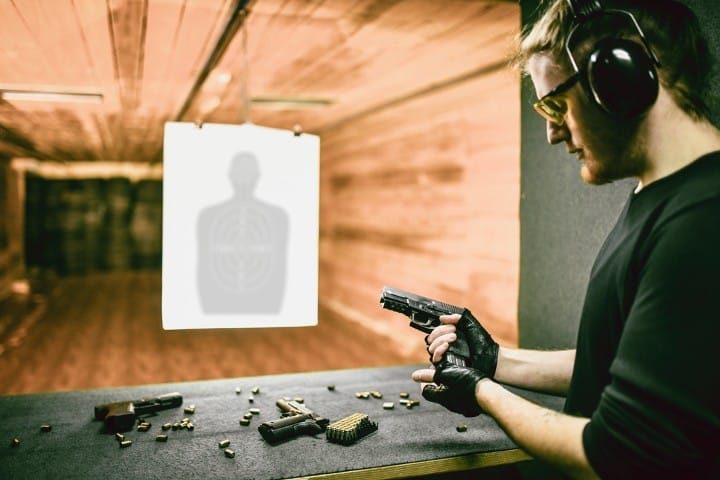
The effort by anti-gun Minnesota politicians to keep its citizens between the ages of 18 and 21 from keeping and bearing arms failed last week.
But the ruling was closer than it appeared, and the state’s radical Muslim Attorney General Keith Ellison is appealing the decision.
At issue is the state’s law limiting the Second Amendment’s rights to citizens aged 21 and above, neatly infringing on the rights of citizens 18 to 20 years of age. Three of those brought suit, along with the Minnesota Gun Owners Caucus, the Second Amendment Foundation (SAF), and the Firearms Policy Coalition (FPC).
On the surface, the decision appeared to be clear. Wrote U.S. District Judge Katherine Menendez: “The Supreme Court’s recent decision in … Bruen compels the conclusion that Minnesota’s permitting age restriction is unconstitutional, and Plaintiffs are entitled to judgment [in their favor].”
Menendez, a Biden appointee, tried her best to come to a different conclusion. She gave ample space in her 50-page ruling to the testimony of various anti-gun, anti-Second Amendment witnesses brought by the key defendant in the suit, John Harrington, Minnesota’s commissioner of public safety.
First up was a case decided in Florida on a similar issue in which the question of the applicable time frame was to be considered: 1791 (when the Second Amendment was ratified as part of the Bill of Rights to the U.S. Constitution) or 1868 (when the Fourteenth Amendment “incorporated” the Second Amendment against the states in addition to the federal government).
Menendez was forced to quote from Bruen:
…Constitutional rights are enshrined within the scope that they were understood to have when the people [the Founders] adopted them.”… [Emphasis in original.]
[W]e hold that when the Second Amendment’s plain text covers an individual’s conduct, the Constitution presumptively protects that conduct.
To justify its regulation, the government may not simply posit that the regulation promotes an important interest. Rather, the government must demonstrate that the regulation is consistent with this Nation’s historical tradition of firearm regulation.
Only if a firearm regulation is consistent with this Nation’s historical tradition may a court conclude that the individual’s conduct falls outside the Second Amendment’s “unqualified command.”
The Supreme Court’s decision in Bruen was so unambiguous that Judge Menendez, after hearing the arguments brought by Harrington et al. in the Minnesota suit, was forced to conclude:
Because the Second Amendment’s text presumptively guarantees Plaintiffs’ right to publicly carry a handgun for self-defense, under Bruen Defendants must demonstrate that the age requirement in [the Minnesota law] is consistent with the nation’s history and tradition of firearms regulation.
Based on a careful review of the record, the Court finds that Defendants have failed to identify analogous regulations that show a historical tradition in America of depriving 18–20-year-olds the right to publicly carry a handgun for self-defense.
As a result, the age requirement prohibiting persons between the ages of 18 and 20 from obtaining such a permit to carry violates the Second Amendment.
Defendant Harrington brought in another Second Amendment “expert,” college professor Saul Cornell. Cornell tried his best to persuade the court that the Second Amendment didn’t really mean what it said, that what the Founders intended was that possessing firearms was not a right but a duty citizens owed to the states, and that “imposition of a duty does not necessarily confer individual rights.”
The judge expressed her disappointment that Cornell’s testimony wasn’t sufficiently persuasive to save the Minnesota law:
Professor Cornell’s testimony raises a compelling question about the propriety of drawing conclusions about a modern regulation’s validity from the absence of laws prohibiting 18-to-20-year-olds from possessing weapons during the founding era….
Ultimately, the Court is constrained to conclude that Defendants have not met their burden to show that Minnesota’s challenged law is consistent with the nation’s founding-era history and tradition of [firearms] regulation.
That should have been the end of it. Case closed. Next.
Not quite.
Biden appointee Menendez whined that, under the old way of determining whether Second Amendment rights had been violated by state law, she would have ruled differently:
If the Court were permitted to consider the value of these goals [the “old way”] and how well Minnesota’s age requirement fits the ends to be achieved, the outcome here would likely be different.
But whatever the evidence may reveal about the wisdom behind enacting a 21-year-old requirement for publicly carrying a handgun, such analysis belongs to a regime of means-end scrutiny scuttled by Bruen. [Emphasis added.]
Under Bruen, the balancing of interests in public safety and the right to keep and bear arms has already been [quoting Bruen] “struck by the traditions of the American people.”
She then preached from the bench, holding that the times have changed and implying that the Constitution simply hadn’t kept up:
Second Amendment jurisprudence now focuses a lens entirely on the choices made in a very different time, by a very different American people.
Given the relative dearth of firearms regulation from the most relevant period where that lens is aimed, the endeavor of applying Bruen seems likely to lead, generally, to more guns in the hands of more people, not just young adults.
Some Minnesotans are surely fine with that result. Others may wonder what public safety measures are left to be achieved through the political process where guns are concerned.
But Bruen makes clear that today’s policy considerations play no role in an analytical framework that begins and ends more than two hundred years ago.
In laymen’s terms, the judge laments the olden days when states were largely free to emasculate the Second Amendment at will, using “public safety measures” as the scalpel.
But she did properly rule:
Because the plain text of the Second Amendment covers the Plaintiffs’ proposed course of conduct and Defendants have not met their burden under the historical prong of Bruen’s test, Plaintiffs are entitled to judgment as a matter of law on their Second Amendment claim.
Immediately following her ruling, Minnesota’s AG Ellison filed an emergency motion to delay its implementation so that he could have to time to prepare an appeal. And Governor Tim Walz, a favorite of the NRA, is at the same time pressuring Minnesota lawmakers to pass bills allowing for unconstitutional expanded background checks and an unconstitutional red flag law.



